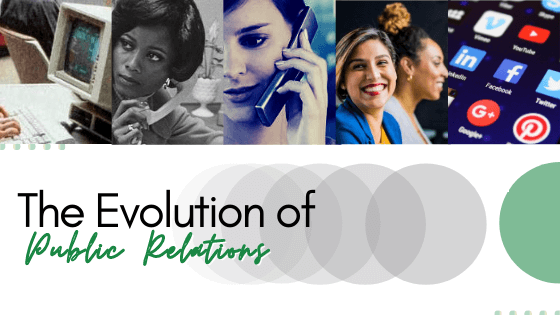Men and women appear to suffer pain differently. So do blacks and whites. Modern medicine has trouble even talking about it.
By Ruth Graham | JUNE 15, 2014
IF YOU STOPPED the average person in an emergency room and asked why she’s there—not just her guess at the problem, but what really motivated her to show up—the number one answer would be “pain.”
For all that modern medicine has learned about disease and treatment, it’s alleviating pain that still lies at the heart of the profession. And in recent years, the notion of treating “pain” as its own entity has been rising to the forefront in medicine. Pain management now has its own journals, conferences, clinics, and specialists, and pain relief is sometimes referred to as a human right. The Institute of Medicine reports there are more than 100 million chronic pain sufferers in the United States, and others have estimated the problem costs $60 billion a year in lost productivity. In September, a coalition that includes the FDA, the CDC, and the NIH is expected to release a long-awaited “National Pain Strategy.”
But as pain rises on the agenda for clinicians and patients, research is uncovering some unsettling facts about how it really affects people. First, not everyone experiences pain similarly. In experiments, women and black people have frequently shown lower pain tolerance when asked to do things like hold their hands in ice water. Gender differences in pain prevalence and intensity emerge in adolescence, and for reasons not fully understood, women are particularly vulnerable to conditions including migraines, back pain, and fibromyalgia. Low-income Americans, too, are more likely to suffer pain than their high-income peers: They are likelier to be engaged in manual labor, to eat poorly, and to go to the doctor less often, to name just a few causes. Among pain patients, blacks and Hispanics are likelier to report their pain is severe.
It’s also clear that not everyone’s pain receives equal attention. A robust and growing body of evidence suggests that the groups who suffer the most also receive less effective treatment for that suffering. Pain is “a huge public health problem,” said Carmen Green, a pain specialist at the University of Michigan who has researched disparities in care. But because a disproportionate number of its victims belong to traditionally disempowered groups, “it’s been a silent epidemic.”
Pain, it appears, is distributed with a kind of inequality distinct from the other inequalities in American health care—one with its own contours, its own logic, and its own disturbing history. And because chronic pain, in particular, often lacks a discrete location in the body, it leaves both diagnosis and treatment almost completely up to a doctor’s own judgment, which brings in a range of subtle prejudices that psychologists and other scholars are only beginning to understand. “Chronic pain greatly exacerbates already existing inequality within society,” said Joanna Bourke, an historian at Birkbeck College in London, whose new book, “The Story of Pain: From Prayer to Painkillers,” makes the intriguing argument that both experiences of and responses to pain have evolved since the 18th century.
Bourke’s book, and the emerging research on pain, suggest that pain mirrors existing prejudices in society in ways that medicine is only beginning to grapple with. There’s no quick route to solving the problem of pain care, and its thorniness suggests that doctors must first face the steep challenge of understanding both the history and psychology of a problem that medicine, often, would rather not talk about.
‘IN OUR PROCESS of being civilized we have won, I suspect, intensified capacity to suffer,” renowned American neurologist Silas Weir Mitchell wrote in 1892. “The savage does not feel pain as we do.” It was an uncontroversial statement at the time: Jews, the Irish, Southern Europeans, Native Americans, and black people were just a few of the groups that had been long assumed to possess inferior awareness of pain. White women, by contrast, were thought to be exquisitely sensitive.
Paradoxically, the same groups accused of insensitivity often were also said to respond to pain with insufficient stoicism. Black people’s supposed indifference to pain was used to justify colonization and slavery; at the same time, slaves were often accused of overreacting to pain. Bourke looked as far back as the 18th century and found that some groups were accused of widely disparate kinds of “improper” pain responses practically all at the same time. “It’s a really a Catch-22,” she said. “They’re either not really feeling, and it’s just reflexes, or they’re feeling too much and it’s exaggerated or it’s hysterical.”
It was only in the 1940s that mainstream medicine started to question the notion that northern European and “primitive” women experienced pain differently. And as late as 1959, doctors were still debating whether eye color correlated to tolerance for pain. Dark-eyed patients, the editors of the British Medical Journal wrote, are likelier to have descended from “more excitable Mediterranean people.” One doctor wrote in to say he “eased [his] burden considerably” by choosing to work with as many blonde, blue-eyed children as possible: “Nordic children,” he wrote, “either have a higher pain threshold than other children or greater self-control.”
There was little mainstream medical interest in the question of pain until the 1970s, when researchers began looking into pain itself, not just pain as a byproduct of various conditions. The field of pain management got its own medical society in 1983, and by then it was starting to become clear that not every pain patient was treated the same. Studies had begun to show, for example, that minorities being treated for metastatic cancer pain were twice as likely as white patients to receive inadequate pain relief. A 1981 study conducted in Hawaii found that white surgery patients were more likely to be given analgesics than Filipino, Japanese, or Chinese patients, in part because of stereotypes about how different ethnic groups respond to pain.
It sounds like the kind of paternalism that would be easy for modern doctors to shed, but the evidence shows that such inequalities persist. “I don’t think things have changed as much as we tell ourselves,” said Bourke. Women still receive less effective pain treatments, even though they are significantly likelier than men to experience pain. A 2007 study of heart-surgery patients found that men were likelier to be given pain medication, and women were likelier to be given sedatives. An earlier study found women with metastatic breast cancer were less likely to receive “optimal” pain treatment than men with prostate cancer. With chronic pain in particular, convincing doctors to take pain seriously can be difficult. “With childbirth, we don’t say to the woman, ‘Oh, you’re making up the pain, stop being such a wuss,’” said Judy Foreman, a former health reporter for the Globe and the author of the recent book “A Nation in Pain: Healing Our Biggest Health Problem.” “With chronic pain, the pain can be way worse than childbirth, and you don’t know if it’s going to go away, and people don’t believe you.”
The evidence for undertreatment of pain in minority patients is even more striking. Black pain patients are less likely than white patients to receive pain medication; when they do receive it, they receive less. Studies of post-operative care have repeatedly found white patients receiving higher doses of opioids than minorities. The same is true for chronic pain. A 2005 study found that minorities are also less likely to be able to get their prescriptions for analgesics filled at their local pharmacies. A more recent study even found that Hispanic children received 30 percent less opioid analgesic than white children for their tonsillectomies.
Potential explanations for these disparities include conscious and unconscious bias, and doctors’ assumptions about minorities’ ability to pay for medication. But a separate strain of research suggests that doctors may not even recognize the full extent of that pain in the first place. In experiments published in a 2012 study, Sophie Trawalter, an associate professor of public policy and psychology at the University of Virginia, asked participants to think about how much pain they would experience in certain scenarios, and then showed them pictures of either a black person or a white person and asked how much pain they would expect that person to feel.
The results were striking: White participants and black participants all rated blacks’ pain as less intense than whites’. When the experiment was repeated with nurses and nursing students, the results were the same. And people with nondiscriminatory racial attitudes make the same kind of perception errors as measurably prejudiced people do. A related study published in February found that racial bias in pain perception appears in children as young as 7. “If you can’t recognize the pain, you can’t treat it,” Trawalter said.
Trawalter’s work suggests that the problem of pain inequality may turn out to be more stubborn than it looks. “At least one thing that contributes to this bias is the belief that on average, black people have harder lives, which is true,” she said. “But then there’s the belief that hardship leads to toughness….It’s a cultural narrative we have that unfortunately backfires in this really tragic way.” In a perverse irony, sympathy seems to diminish empathy.
PAIN IS A SPECIAL CASE, even within the tilted playing field of American health care. One reason is its inherent, even radical, subjectivity. Western medicine is founded on objectivity: When a patient says something is wrong, doctors look for a discrete problem that can be tested and correlated to a diagnosis. Pain, by contrast, is defined by what the patient feels. The most common tool for measuring it is a simple 0-to-10 scale of the patient’s own perception. As nurse and pain-management pioneer Margo McCaffery put it in 1968 in a definition still widely cited, pain is “whatever the person experiencing the pain says it is, existing whenever the person says it does.”
Chronic pain in particular often doesn’t have a discrete material location, or an identifiable cause. “That doesn’t fit into the rubric of what it means to be a Western medical practitioner,” said Daniel Goldberg, a bioethicist at East Carolina University and author of the recent book “The Bioethics of Pain Management.” This leaves its sufferers vulnerable to skepticism, prejudice, and “accusations of malingering,” he said. It doesn’t help that many pain medications are addictive, and some people really do feign pain to scrounge their next prescription.
Because pain has such a strong psychological component, finding objective tools to diagnose it is not a simple proposition. Research emerging in the last few years has suggested that certain types of pain create a distinct signature in the brain, and even that sensitivity to pain might be connected to brain structure. But the idea of a practical and affordable tool for measuring all kinds of patient pain is a distant dream at best. And that leaves pain susceptible to doctors’ prejudices, including unconscious ones. What it comes down to is: Do they trust their patient’s account of their own pain?
It is easy to forget, amid tales of chronic pain, that the story of pain relief since those dark days is a genuinely triumphant one: Modern painkillers are often quite cheap and effective, and the stronger ones can make serious pain almost magically endurable. But ironically, advancements in medicine may have made it harder to deal with the pain that remains. As Bourke wrote in a recent essay for Aeon magazine, there was a “rich language of suffering” before the days of general anesthesia and formal pain management. Patients still talk about their pain—particularly online—but doctors do not listen like they used to, she suggests: Modern pain management is “moving the subjective experience of pain further towards the periphery of medical discourse.”
As awareness of the undertreatment problem spreads, there’s hope that it will start to change how pain is greeted by hospitals and doctors’ offices. There’s a long way to go: Foreman’s book reports that most medical students receive less than 10 hours of pain education in four years of classes, and that only four medical schools in the country require students to take a course in chronic pain. Foreman says, in all seriousness, that veterinary schools currently do a better job training their students in pain management than medical school do.
Some see psychology offering tools for change. In a series of experiments similar to Trawalter’s, psychologist Brian Drwecki, now of Regis University, found that asking subjects in pain-perception experiments to briefly pause to consider the other person’s perspective drastically reduces racial bias. It almost sounds too good to be true—even easy—but the idea still faces plenty of hurdles. “Empathy is often downplayed in [the medical] community as something that will hurt you,” Drwecki said, referring to doctors’ fears of “burnout.” “It’s a difficult job, and one of the protective mechanisms is to push away empathy.”
Just as pain has become its own field of medicine, the rise of pain as its own cause may be what catalyzes change. Foreman points out that in recent decades, groups including AIDS and breast cancer patients have banded together to shout down the stigmas surrounding their diseases. They have organized marches, told their stories in the press, and written letters to Congress for increased funding for research. As they have, their causes have tended to emerge as more kaleidoscopic problems—the kinds that demand, and get, more ambitious and imaginative solutions. “Our best hope is for pain patients to get very active,” Foreman said. Sometimes the only reasonable response to pain is to scream a bit louder.




